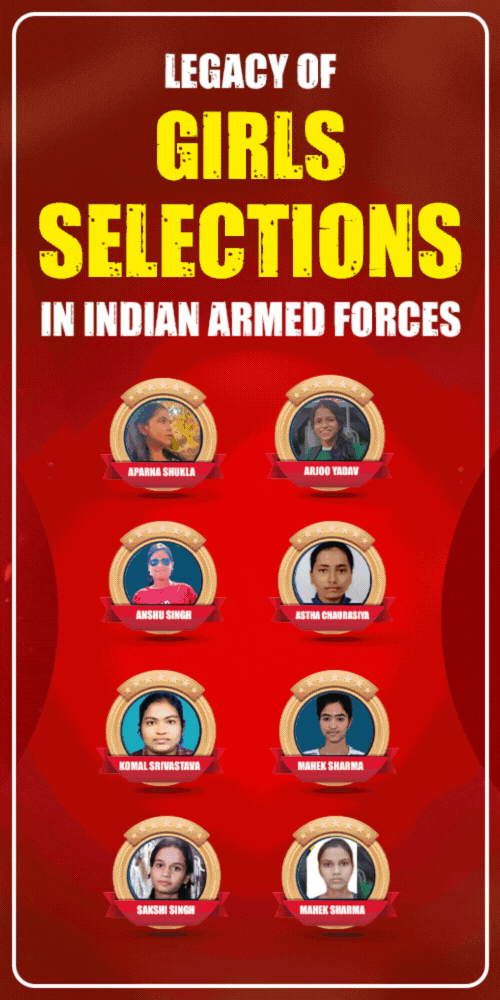The Indian Army is well-known for its discipline, courage, and professionalism. It comprises regiments and corps, each with its traditions and history. Indian army regiments focus on combat roles like infantry, armoured, and artillery, while the corps provides support services such as engineering, communications, and medical aid.
Working together, they ensure the Army can function smoothly, from battlefield operations to logistical and technical support. This article will discuss the various Indian army regiments and corps, highlighting their roles, responsibilities, and contributions to the nation’s defence. So to grasp the information deeper, take a coffee and stick to this long-form article till the end.
Regiments In the Indian Army
Infantry, armored, and artillery are among the various regiments of the Indian Army, each with its own customs and functions. To increase military effectiveness, these Indian army units concentrate on front-line combat responsibilities. The several regiments in the Indian army are explained in depth here.
Indian Army Infantry Regiment
An Infantry Indian army regiment is the core of its combat force, specialising in ground-based warfare and playing a crucial role in close combat, securing territory, and defending strategic positions. With around 27 major regiments, including iconic ones like the Sikh Regiment, Rajput Regiment, and Gorkha Rifles, the infantry has deep historical roots dating back to British rule.
Each regiment consists of multiple battalions, typically with 600-900 soldiers, trained to fight in diverse terrains such as mountains, deserts, and jungles. Infantry regiments are equipped with small arms, machine guns, anti-tank weapons, and armoured vehicles, allowing them to adapt to different combat scenarios.
These Indian army units are well-known for their adaptability and take part in counter-insurgency and high-intensity combat missions. To carry out combined arms operations, they frequently cooperate with armoured, mechanised infantry, and artillery units.
Because soldiers frequently serve in the same infantry regiment for the duration of their careers, they form close ties and have a strong sense of tradition and camaraderie. They are an essential part of the Indian Army’s combat effectiveness because of their capacity to perform both offensive and defensive duties in a variety of circumstances.
Mechanised Infantry regiment
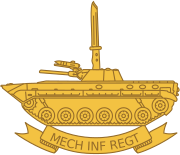
In an effort to modernise and adjust to contemporary warfare methods, the Indian Army established the Mechanised Infantry Regiment (MIR) in 1979. This relatively new structure specialises in mechanised combat, quick mobility, and adaptability. By using armoured vehicles to increase infantry units’ mobility and firepower, it was designed to close the gap between conventional infantry and armoured forces.
Three tracked and two wheeled reconnaissance and support battalions make up the Mechanised Infantry Regiment’s 27 battalions. In India, these battalions are dispersed throughout different armoured formations. They comprise the Mechanised Infantry arm, which also includes the Brigade of the Guards’ 23 battalions. They make up the Mechanised Forces along with the Armoured Corps.
Indian Army Armoured Regiment

With a focus on operating main battle tanks (MBTs) such as the T-90 Bhishma, Arjun MBT, and T-72 Ajeya, an armoured regiment is a crucial part of the Indian Army’s armoured corps. Despite having their origins in the British Indian Army’s cavalry troops, this Indian army regiment was founded after independence in 1947 and offers significant firepower, mobility, and protection in combat.
In addition to aiding defensive operations when needed, their main responsibilities include carrying out swift offensive operations, breaching enemy defences, and occupying key sites. With a total of about 65 armoured regiments, each with 45–60 tanks, they are essential to modern combat and frequently participate in combined arms operations with mechanised infantry, artillery, and air support.
Indian Army Artillery Regiment

With almost one-sixth of the army’s overall strength, the Artillery Regiment is the second-largest branch of the Indian Army. During combat, it is in charge of delivering long-range fire support. Using a range of weapons, including howitzers, field guns, mortars, rockets, and missile systems, an artillery regiment in the Indian army is primarily responsible for providing indirect firepower. In order to destroy important targets, neutralise enemy fortifications, and support infantry and armoured forces during offensive and defensive operations, artillery regiments are crucial.
Units come in two primary varieties. Regiments armed with mortars, field guns, medium guns, rockets or missiles comprise the first kind. The second category consists of Surveillance and Target Acquisition (SATA) regiments, which are outfitted with weapon finding radars and other mission support equipment.
Different Corps in the Indian Army
Larger organisations known as corps offer expert help in areas like engineering, logistics, and medicine. The several corps in the Indian Army are explained in depth here.
Corps of Army Air Defence

An essential component of the Indian Army regiment is the Army Air Defence (AAD). Particularly below 5,000 feet, it protects against aerial threats such as enemy aircraft, helicopters, drones, and missiles. In 1994, the Army Air Defence became a distinct entity. By thwarting approaching threats before they have a chance to inflict harm, it serves to safeguard Indian airspace and give ground forces air cover.
The Army Air Defence is continuously upgrading its equipment to combat emerging threats like UAVs and stealth aircraft as air warfare evolves. This guarantees that it will continue to play a vital role in safeguarding Indian infrastructure and military. In order to ensure that the army can withstand air attacks, the Army Air Defence is crucial in both times of peace and conflict.
Indian Army Service Corps
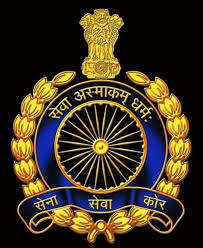
Army Service Corps logo An essential component of the Indian Army is the Army Service Corps (ASC). Whether the army is at war or peace, it is responsible for ensuring that soldiers have access to food, fuel, equipment, and ammunition. Since its founding in 1760, the Army Service Corps has played a significant role in keeping the army prepared by managing transportation and ensuring that supplies arrive at their destination on schedule, even in difficult terrain like mountains.
In order to maintain military operations, the Army Service Corps (ASC) uses several types of vehicles to transport supplies and monitor supply lines. It also looks after creatures that are in motion, particularly in rugged areas like mountains. Its responsibility is essential to ensuring the Indian Army can function effectively during missions and daily duties.
Army Dental Corps
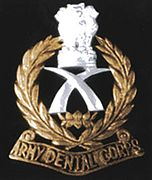
As a specialised division of the Indian Army, the Army Dental Corps (ADC) is in charge of offering military soldiers and their families complete dental care. The Army Dental Corps of Indian Army regiment was founded in 1941 and is crucial to keeping soldiers’ mouths healthy and fit for duty, particularly during deployments and field operations.
The corps provides services such oral surgery, restorative dentistry, and preventative dentistry at a number of military clinics and hospitals. To keep soldiers healthy, Army Dental Corps (ADC) staff are prepared to manage dental crises in both peacetime and conflict areas. An important support component that enhances the Indian Army’s general health and preparedness is the Army Dental Corps.
Indian Army Corps of Engineers
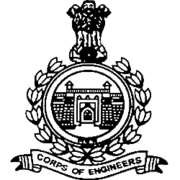
One of the Indian Army’s oldest and most adaptable divisions is the Corps of Engineers. It was founded in 1777 and is in charge of disaster assistance, infrastructure development, and combat engineering. In times of conflict and peace, this Indian army unit Corps offers crucial assistance. Engineers create defensive positions, clear minefields, build bridges, and maintain army mobility during conflict. They work on civil engineering projects, airfield construction, fortification construction, and road construction during peacetime.
The three main groups of the Corps of Engineers—the Bombay Sappers, Bengal Sappers, and Madras Sappers—each have a long and illustrious history. The Corps also contributes significantly to disaster management by providing assistance in the event of natural disasters like earthquakes and floods. Their strategic significance is further increased by the fact that they support UN peacekeeping operations. Because it provides the infrastructure and support required for both military operations and nation-building initiatives, the Corps of Engineers is essential to the Indian Army’s operational success.
Corps of Electronics and Mechanical Engineers

The Corps of Electronics and Mechanical Engineers (EME) is a significant division of the Indian Army. All military hardware, including vehicles, weapons systems, electronics, and communication devices, must be maintained, repaired, and supported technically by this branch. Its primary objective is to guarantee that the army’s equipment is always in good operating order and prepared for battle. It was founded in 1943.
The Corps of Electronics and Mechanical Engineers’ main tasks include servicing, repairing, and upgrading a wide range of equipment, from tanks and armoured vehicles to advanced radars and missile systems. Their expertise in electrical, mechanical, and electronic systems is very important in modern warfare, where having the best technology is crucial. This Indian military regiment Corps also plays a key role in developing and modernizing military technology, which helps India become more self-reliant in defence.
Corps of Electronics and Mechanical Engineers personnel are frequently dispatched to the field to perform repairs during operations in addition to their technical duties, guaranteeing that damaged equipment is promptly put back into service. In order to ensure that the Indian Army’s equipment functions properly and enhances the army’s overall combat efficiency, the Corps of Electronics and Mechanical Engineers (EME) is crucial.
Indian Army Aviation Corps
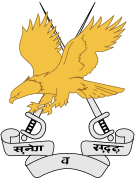
A specialised division of the Indian Army, the Army Aviation Corps is in charge of giving ground forces logistical support, air mobility, and reconnaissance. By combining air power with ground operations, the corps, which was founded in 1986, significantly improves the army’s operational capabilities.
Armed with a varied fleet of helicopters, including as the HAL Dhruv, Mi-17, Cheetah, and Chetak, the Army Aviation Corps carries out a range of tasks, including airlifting supplies, transporting troops, and performing search and rescue missions. Both in combat situations and while providing humanitarian aid, their capacity to quickly deploy personnel and deliver key logistical support is essential.
Additionally, the Army Aviation Corps carries out intelligence-gathering and aerial reconnaissance missions, giving commanders up-to-date knowledge of adversary geography and movement. An integral part of the Indian Army’s operational strategy, the Aviation Corps improves the regiment’s agility and efficacy in a variety of combat actions.
Remount and Veterinary Corps
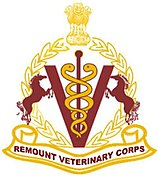
The Remount and Veterinary Corps (R&VC) is a unique division of the Indian Army. The Indian army’s corps regiment is in charge of obtaining, training, and caring for military animals, particularly mules, horses, and dogs. In order to maintain the animals’ health and performance, they also offer veterinarian services. The R&VC was first established in Bengal in 1779 and is essential to ensuring that the army can employ animals for a variety of tasks, particularly in difficult terrain where machinery may not function effectively.
The Veterinary Corps prepares animals for support, transportation, and cavalry forces. They ensure that the animals are prepared for use. Additionally, they regulate the animals’ food to keep them ready and provide preventative and medical treatment.
Through the use of trained animals for search and rescue missions in challenging situations, the Remount and Veterinary Corps also contributes to disaster relief efforts. Their knowledge ensures that soldiers and animals can function effectively in many environments, increasing the Indian Army’s effectiveness in a variety of scenarios.
Corps of Signals
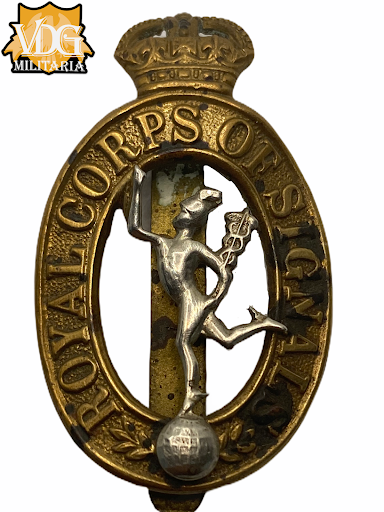
One unique component of the Indian Army is the Corps of Signals. All military activities benefit from its assistance with information and communication technology. In 1911, it began. In order to give orders and maintain control throughout both peace and conflict, the Corps ensures that various units can effectively communicate with one another.
To keep everyone connected in remote and challenging locations, the Corps of Signals uses a variety of cutting-edge communication technologies, including radio, satellite, and optical fibre systems. Additionally, they assist in establishing communication networks in the field, which facilitates communication, information sharing, and teamwork between commanders and troops.
Due to technological advancements in contemporary combat, the Corps examines electronic warfare and cyber security in addition to communication. Corps members receive extensive training in handling complex military communications and operating cutting-edge technology. For the Indian Army to function effectively, the Corps of Signals is crucial because it facilitates real-time communication and mission fulfilment.
Indian Army Education Corps
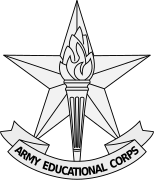
One unique component of the Indian Army is the Army Education Corps (AEC). The soldiers’ education and training are its main objectives. In 1921, it was initiated. It is crucial because it enables soldiers to grow professionally and learn new things.
The activities of the Army Education Corps are numerous. It provides soldiers with technological and military knowledge. Additionally, it teaches soldiers and their families new skills including how to read and write. Teachers and trainers in the Army Education Corps instruct soldiers in a variety of subjects. To help soldiers learn even more, they also collaborate with training facilities and schools.
The Army Education Corps improves the Indian Army by assisting soldiers in their learning and development.
Indian Corps of Military Police

An essential component of Indian Army units is the Corps of Military Police (CMP). It is in charge of maintaining discipline, upholding order, and guaranteeing the security of army installations and troops. Founded in 1939, the Corps of Military Police is essential in both times of peace and conflict. Its primary duties include traffic control, crime investigation, and security during military exercises and operations.
Military police officers receive training in a variety of law enforcement subjects, including as riot control, crowd management, and criminal investigations. Additionally, they are essential to counter-insurgency operations, supporting and securing ground forces in vulnerable regions. In addition, the Military Police are in charge of overseeing military courts, escorting prisoners, and carrying out army disciplinary actions.
Their presence is essential to preserving order and discipline among soldiers and guaranteeing adherence to military rules. The Corps of Military Police uses cutting-edge techniques and technology to increase its efficacy as it adjusts to new difficulties brought about by the complexity of combat. In order to protect military personnel and operations, the Military Police play a crucial role in Indian Army regiments.
Army Medical Corps

Since 1764, troops and their families have received medical attention and support from the Army Medical Corps (AMC), the Indian Army’s medical department. Preventive care, medical treatment, surgery, and rehabilitation services are among the primary duties of the AMC.
To guarantee that troops in various operational contexts have access to medical care, they run military hospitals, field medical units, and aid posts. Physicians, nurses, and paramedics in the Medical Corps are prepared to treat a wide range of medical ailments, from standard medical care to trauma care during conflict.
The Medical Corps not only offers medical care but also engages in illness prevention, health education, and mental health support for soldiers. By offering medical support during natural catastrophes and humanitarian operations, this corps of the Indian Army regiment also plays a vital role in disaster management.
The Indian Army’s operational readiness depends on the Army Medical Corps, which makes sure that soldiers receive prompt, efficient medical attention to improve their performance and fortitude in combat.
Army Postal Service Corps
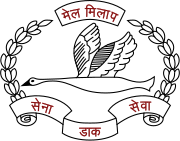
An essential component of the Indian Army is the Army Postal Service Corps (APSC). In 1856, it was initiated. Postal facilities, timetable dispatch, remittance, and debit army post logistics are among the postal services that the Postal Service Corps offers to military personnel. Through 358 Field Post Offices across the country, it also runs Permanent Aadhaar Enrolment Centres for Indian Army, Navy, Air Force, and paramilitary personnel and oversees the Sainik Samachar Patra Seva.
This Indian army regiment corps also makes sure that Indian troops serving with the UN Peacekeeping Forces overseas have postal coverage, which is essential for sustaining military morale and communication in active and isolated regions.
In addition to standard postal services, the APSC assists with logistical support by supplying vital lines of communication during emergencies and military operations. By enabling soldiers to stay in contact with their loved ones, they contribute significantly to preserving soldier morale.
Indian Army Ordnance Corps

An essential component of the Indian Army, the Ordnance Corps is in charge of acquiring, storing, distributing, and maintaining military hardware, ammunition, and weaponry. The Ordnance Corps was founded in 1775 and is crucial to ensuring that the military has the materials and logistical support it needs to conduct its missions.
Managing the stock of different kinds of ammunition, explosives, and weapons, as well as supervising the upkeep and repair of weapon systems and other military hardware, are the key responsibilities of the Ordnance Corps. By making sure that handling and storage practices follow stringent safety regulations, this Indian military corps also plays a vital part in munitions safety.
In order to improve the capabilities of the armed forces, the Ordnance Corps also works closely with research and development organisations to modernise and indigenise military hardware. Their proficiency in logistics guarantees that soldiers in the field have access to the proper tools and supplies, which directly improves the Indian Army’s operational efficacy.
Indian Army Pioneer Corps

The Indian Army Pioneer Corps is a specialized part of the Indian Army. It was started in 1758 and provides essential engineering and support services for military operations. The Indian Army Regiment Pioneer Corps plays an important role in tasks like building roads, and bridges, and providing logistical support, especially in difficult and remote areas.
The main works of the Pioneer Corps include building roads, making bridges, loading and unloading, and other support activities crucial for keeping military units moving. Pioneer Corps members are skilled in manual labour tasks and engineering support roles and can adapt to different needs.
The Pioneer Corps offers labour support during military operations and humanitarian aid initiatives in addition to their engineering duties. They are particularly useful in disaster relief efforts, helping to fix infrastructure and remove debris. The Pioneer Corps plays a crucial role in the Indian Army by making sure that logistical and engineering difficulties are effectively managed, which improves the overall effectiveness of the armed forces.
Indian Army Defence Security Corps

One of the Indian Army’s specialised units is the regiment’s Defence Security Corps (DSC). In 1947, it began. The primary responsibility of the DSC is to protect military installations and critical assets. In both peaceful and combative situations, this is crucial.
The Defence Security Corps protects key locations, including military installations like weapons depots. It also aids in maintaining order in combat zones and putting an end to uprisings.
In addition to maintaining security, the DSC assists major military operations and helps protect key personnel. The Indian Army greatly values the Defence Security Corps’ reputation for promptly addressing various safety issues.
Army Intelligence Corps
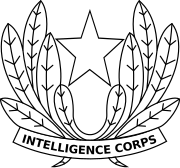
The Intelligence Corps is a vital branch of the Indian Army responsible for gathering, analyzing, and disseminating intelligence to support military operations and national security. Established in 1941, the corps plays a crucial role in ensuring that commanders have the information necessary for informed decision-making during peacetime and conflict.
The primary functions of the Intelligence Corps include surveillance, reconnaissance, and the collection of human intelligence (HUMINT). Personnel are trained to operate in diverse environments, conducting intelligence operations that provide insights into enemy capabilities, intentions, and movements. The Indian Army Regiment Corps works closely with other intelligence agencies to synthesize information and produce actionable intelligence.
In addition to operational intelligence, the corps is involved in counter-intelligence activities to protect military assets and personnel from espionage and sabotage. The Intelligence Corps also plays a significant role in strategic planning, contributing to the development of military tactics and strategies based on intelligence assessments.
Difference Between Regiments and Corps
Although both Army Corps and Indian Army Regiments are vital parts of the Indian Army, they have different formations and functions. The following are the main distinctions between Army Corps and Indian army regiments:
1. Role and Function
-
Indian Army Regiments: Regiments primarily combat-focused units that engage directly with the enemy. They specialize in specific types of warfare, such as infantry (foot soldiers), armoured (tanks), or artillery (heavy firepower).
-
Indian Army Corps: Provide specialized support services to the combat units. Corps handle communications, logistics, medical care, engineering, and equipment maintenance, ensuring smooth operations on the battlefield.
2. Organizational Structure
-
Military Regiments: Typically consist of several battalions or squadrons and are more specific in their role. Each regiment has its own identity, traditions, and history, with soldiers from particular regions or communities.
-
Indian Army Corps: These are larger formations with multiple units under them, each specializing in a specific function (e.g., signals, logistics, engineering). Corps units serve across different regiments and divisions.
Conclusion
The strength and success of the Indian Army are based on its regiments and corps. Indian Army Regiments play a vital role in frontline defence, interacting directly with the adversary and defending the country thanks to their war experience and longstanding customs.
The Army Corps, meanwhile, supplies the vital support systems—communications, medical assistance, engineering, and logistics—that enable the Army to function effectively in both times of peace and conflict. They work together to create a strong and unified force that guarantees the Indian Army will always be among the most reputable and successful armed forces in the world.





